“Photography Has Become a Word in a Sentence”
Transcendental photojournalist turned artist Cristina de Middel shows her dramatic work in India for the first time, at the inaugural Goa Photo
 Rajni George
Rajni George
 Rajni George
Rajni George
 |
06 Mar, 2015
|
06 Mar, 2015
/wp-content/uploads/2016/01/17976.credit-isabel-ramon-02-2.jpg)
How do you take the tired notion of otherness and turn it on its head? By owning it. Exhibited at Panjim’s Kala Academy as part of the first Goa Photo festival—the state’s first international curated photo festival held in outdoor locations around its capital—rising star Cristina de Middel’s What Hatred Did to Them (2014, out as a photo book this June) hits at all our received ideas of Africa, while playing with the theatre of the macabre. So, displayed on tripartite structures against the backdrop of the river and the Reis Magos fort in the distance, African children play dead, literally. They are inspired by an old book, My Life in the Bush of Ghosts by Amos Tutuola, which narrates a child’s escape from war and his thirty years lost among spirits and the dead in the Bush; in this version the current Lagos neighborhood of Makoko, a floating slum with its own modern terrors. This kind of generous, far-reaching leap is trademark de Middel.
The documentary photographer and artist’s big breakthrough was The Afronauts, her self-published 2011 photobook about the short-lived 1964 Zambian space program, and a marvellous journey through dream worlds where elephants and bubble-headed ‘Afronauts’ contend with the universe. (That first print run of 1000, is now so coveted you might have to pay a 1000 pounds for it, The Telegraph reported last year.) The images blended fact and fiction beautifully, in the way contemporary photographers can manage; subverting reality and turn it into art. And, best of all, de Middel hadn’t even been to Africa yet, at the time; she was finally invited in 2013. “People used to invite me to take part in all kinds of things as an expert of Africa,” she recounts, showing her work for the first time in India. “I wasn’t an expert on Africa—I was an expert on clichés about Africa!” A sensation amongst the cognoscenti of the photography world, Spanish-Belgian De Middel has come to international attention over the last few years at the genre’s big platforms, and won critical acclaim: Photo Folio Arles 2012, the Deutsche Börse Prize, the Infinity Award from the International Centre of Photography, New York, and most recently, the attention of a major British gallery intending to showcase de Middel. Working with NGOs such as Doctors Without Borders and as a photojournalist in Spain for a decade at publications including Foam and Esquire, de Middel plans to model her revamped website after an online newspaper. The 39-year-old was born in Alicante, Spain and has just left London, where she luxuriated in a love of tea, among other things, for Mexico.
“I like to approach the big, classical big subjects: Africa, China, Palestine,” she says, displaying her many projects (three solo books and two collaborations are out this year) with a contagious enthusiasm, and explaining her use of props: “It’s like working as a movie director.”
Poly Spam brings to life the bizarre situations in your spam inbox, from Russian widows surrounded by tins of fish to English orphans in attics to solemn Togo bank officials behind a counter—“People really thought these were real, and that I had done amazing research and gotten access. You put this picture with the spam and it confirms your clichés and it becomes true.” Westside Story is a street photography interpretation of the great Broadway classic, shot off the stage on the streets of New York City, the Jets Irish and the Sharks represented by a real-life women’s football team called the Sharks. “In street photography, it’s all about punctum; that tension in an image. So I enhanced the punctum, I multiplied it. What is the value of street photography if it is staged? I played with this. How would I show the end? I was very lucky because 24 hours before having to leave New York, I found these two girls who were completely drunk, and I started following them, and they kiss, and she falls right after kissing. This is not staged.” In New Zealand, she braves the trap of landscape—“I took a mirror to the antipodes of Spain! They walk upside down!”—to avoid convention; “It’s forcing the viewer, again, to spend more time understanding the picture.” And in Brazil, favelas are depicted through a blue filter in Sharkification, an ongoing project featuring mermaids and sharks on the streets of Rio de Janeiro’s slums: “I try to explain the place using the similitude with the underwater world, and how predators operate within, for example, the coral reef. Because of the World Cup and the Olympics, the government has been trying to clean the favelas, by introducing an outside police force. It has changed the community completely because everyone is suspicious.”
De Middel spoke to Open about harnessing stereotypes, the crisis within photojournalism and her plans for the future—which include a return to these shores. Excerpts from the interview.
The most prominent piece in What Hatred Did to Them is that central image with the child who lies prone, insects crawling around him. Can you tell us about it?
The whole series is based on a book written by a 5-year-old boy, and at that age you are in that scatological period where you mix what is disgusting with what is amazing. This is one of the chapters in which he is trapped inside a ghost for two or three years, and the ‘disgusting ghost’ (that’s the name of the ghost) eats snakes and insects. He locks him in a room full of snakes, etc. I don’t like bugs myself. I was shooting this around Halloween, in October, so I bought lots of props from Halloween stores. The challenge is to make something beautiful out of something people are scared of and are disgusted by. I like when there are two kinds of feelings, two reactions to an image.
Your pieces almost don’t seem like they are in colour.
I don’t see colour very well myself. For me it’s always a challenge. I see colour, but I don’t combine colour very well.
You use muted colours, a quiet palette, that seems to suits your subjects.
I also choose the subjects that allow me to do this—for for example, I would never choose a flower market in India, because of all those colours. So, I would go, I don’t know, to a coal mine.
This is something some Indian photographers are using more, the less showy colours of ourlandscape.
For me, when you take all the importance of colour in a picture, it is more about light. In this story especially it’s very much about light; it’s spooky, creepy, you play a lot with light and with shadows and things like that, in scary movies too. And this is a scary movie in a way, it’s a nightmare.
That wig really did it for me. Wigs are creepy! That child with the wig…
[Laughs.] Yes, it’s nightmares. It’s funny the way they describe it in the book. We don’t come from the same visual culture, but at the end of the day there’s always this point where we meet: scary things are the same for all of us. As if there was a common idea of what a nightmare is, and we are all scared of the same things: not seeing the face, insects. Despite that this is a kid in Nigeria in the fifties and I am a woman in Mexico and Spain today.
There is usually a very defined position: that of the first world looking at ‘them’. You remove some of that gaze.
That’s what I really try to do. When I was a photojournalist, I was very frustrated with how you reduce a continent to half a dozen clichés and stereotypes. If Africa didn’t exist, my challenge would be India!
What is the difference between photojournalism and art, to your mind?
I think the borders are blurring at the moment. First, because the market is collapsing, and newspapers and magazines do not buy and send people on assignment as they used to do 10 or 15 years ago. So, photographers have more free time, and they can say, if no one is asking me to take pictures, I am going to take them for myself, because I love taking pictures. And then you start seeing much more personal projects. For me, what has moved me and what has been the trigger in the engine, all the steps that have brought me here to Goa: I studied fine arts, and when I finished fine arts I felt like contemporary art was something I didn’t want to be part of, because it’s so distant from the audience. I thought, I need to get closer to people and react to the world I live in creatively, in a way that people understand.
So I moved to photojournalism. That was very direct, too close, you react with a camera which apparently has no filter and share your experiences. I was a photojournalist for ten years and after that I realised it was too close, or too direct, and I stopped believing. It was very disappointing for me, how the media reacts.
I’m not underestimating the work photography agencies do, but their work can be very straightforward.
I don’t want to be like an activist against these kinds of things, because everyone can do what they want. For me, I was feeling very uncomfortable. And also something that annoyed me a lot is this moral superiority of photojournalists. Because you go to Haiti and take pictures of people who have nothing, you actually think you are going to help? If you really want to help Haiti, you can help them with aid.
What was the journey away from this like, your transition from photojournalism to art?
Going somewhere, understanding a certain situation and trying to explain it when you come back with images, is something that I still believe in. But not stating it is the truth, that this is my opinion, it is my experience? This responsibility that photojournalism is taking and has taken historically I think is completely wrong. It’s been the reason why we have situations like now in Africa or India, where you reduce everything. You google ‘India images’ and you will get Varanasi, flower markets, and you can go through two or three pages of images before you leave this behind. In Africa, you will get the elephants, the Serengeti—it’s very sad that you can reduce a whole country to that. After some time I realised that the media was not the right platform to say what I wanted to say, and before becoming completely depressed [laughs] I decided to give myself a chance and prove that you can maybe do things in a different way. So I gave myself a sabbatical year, ready to just imagine that we live in a unicorn world, with rainbows, where everything is perfect, and think, what would be the newspaper you would like to buy, and what would be the story you would like to tell and share with others.
I started a couple of projects. I went to China, and I made the book about Mao. [Party: Quotations from Chairman Mao Tse-tung, a re-imagined book full of redacted text, which won Photo Espana’s best international photography book award last year.] I was doing both The Afronauts and the Party book at the same time. I found a story about a Zambian space program and it was perfect. It was an unbelievable story, so it allowed me to play with the veracity of images and the documentary value of photography; because if you take a picture of something that is unbelievable, your brain does a shortcut and says: no, it’s a picture, it’s real. And that is also a way to make longer this perception of the photo. I want people to spend more time trying to decipher it: some look at a picture, and say oh yes, it’s a modern Palestinian scene, oh yes it’s Africa. You know, how people just reduce and it becomes like code.
What is the actual power of cliché?
In The Afronauts, what I did was to intensify the cliché, multiply, make it so big that it becomes about the cliché; an overdose of cliché. In What Hatred Did to Me, it’s not so much about cliché. There are some parts like this in the book, it’s not like I created this; it is in the book. When the boy enters the bush, for example, he has to confront three ghosts, one that is gold, one that is silver, one that is bronze. They all tempt him with food that is gold, silver, bronze, so I took a picture of that; I took golden spray and painted the food, and when I was taking the pictures, I thought, this is actually a very powerful cliché about Africa: food is gold!
Also the guy with the bugs all over him: do an image search for ‘African kid’ and most of them will have flies around the mouth. The beautiful thing about working like this is that you discover more layers to the story yourself, when you are doing these translations. There are many more in the books, but I wasn’t looking for them. You cannot run away from cliché.
What are the new challenges of photography?
Things have changed a lot. Before you needed to know a lot about photography; ten or 15 years ago, it was maybe 60 percent of the job, taking a good picture. The other 40 percent was to publish it and manage to make the network to make your work visible. Nowadays, maybe 5 percent is the skill, and the rest is about network and knowing the right people, and knowing also how to tell a story. Photography has become just like a word in a sentence. You can have beautiful calligraphy, but if you are not telling me something interesting…
Has the new attention changed things? Photographers can often struggle for a long time.
Well, I never had problems with publishers. I work with friends, it’s not a business, it’s more like an adventure, a game. I’m lucky that the books normally sell out, it’s not a big risk for the publisher. The first thing I did was to self publish, and to believe in this unicorn-rainbow world I was imagining, and I was very lucky and it worked out well. It was like: now I have the microphone and I have lots of things to say.
You haven’t shown much work about Spain, your country?
It’s always a problem to try and describe your own country. Yes, first because I was a photojournalist for ten years there. Now I’m attracted to travelling, but I’m going back to Spain for sure because I have a few things to say.
What are you working on now?
I’m finishing the favela project, and I’m coming back to India in January for a project. In Mexico I started a series about Mexican immigration, and I have another book coming out about drawings. I started taking pictures to make drawings—now, I am coming back to where I started.
(Cristina de Middel’s What Hatred Did to Them is showing at Goa Photo, Panjim, 25 February-7 March, 2015)

/wp-content/uploads/2025/04/ToC-Cover-Pahalgam.jpg)



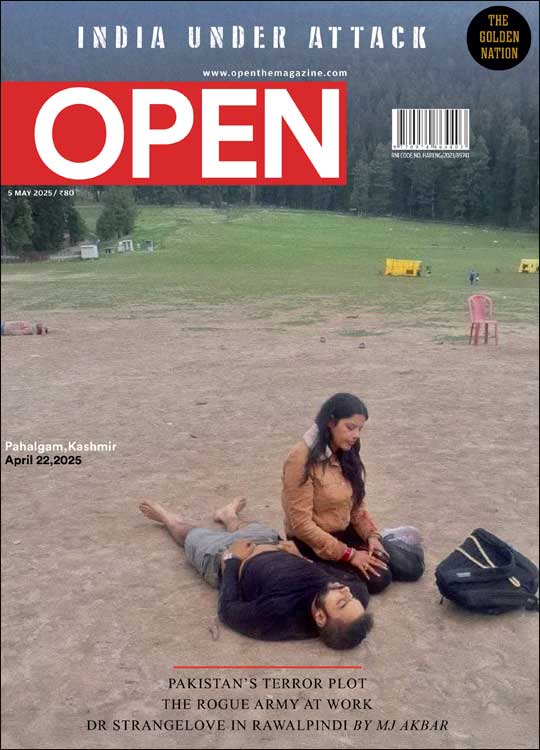

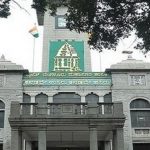
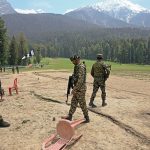
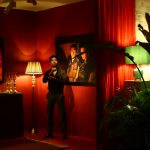
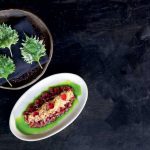


More Columns
Was Shakespeare an Errant Husband? Nandini Nair
The splitting of Bengaluru’s municipal body exposes a deeper tension V Shoba
Indian Army, Navy send cryptic messages on X hinting at war readiness Ullekh NP